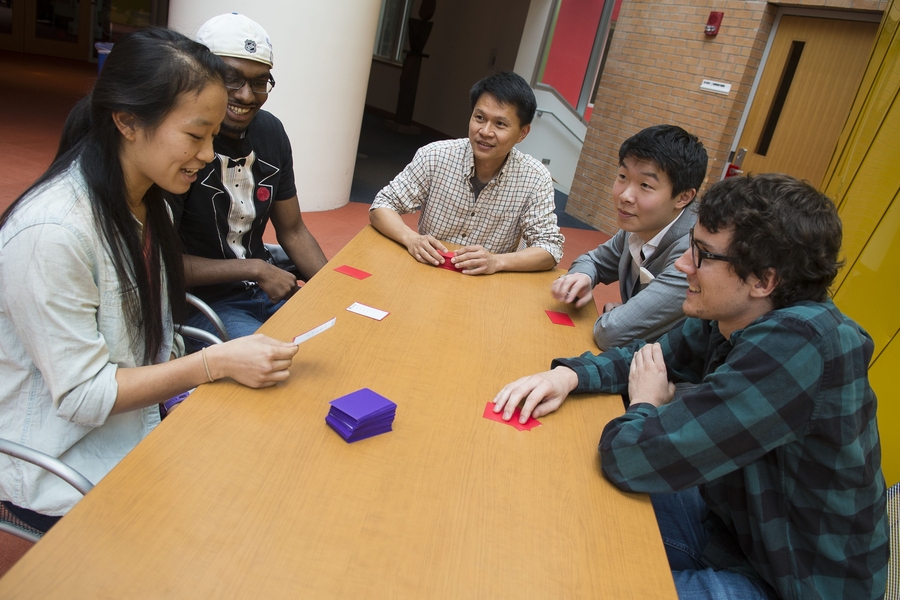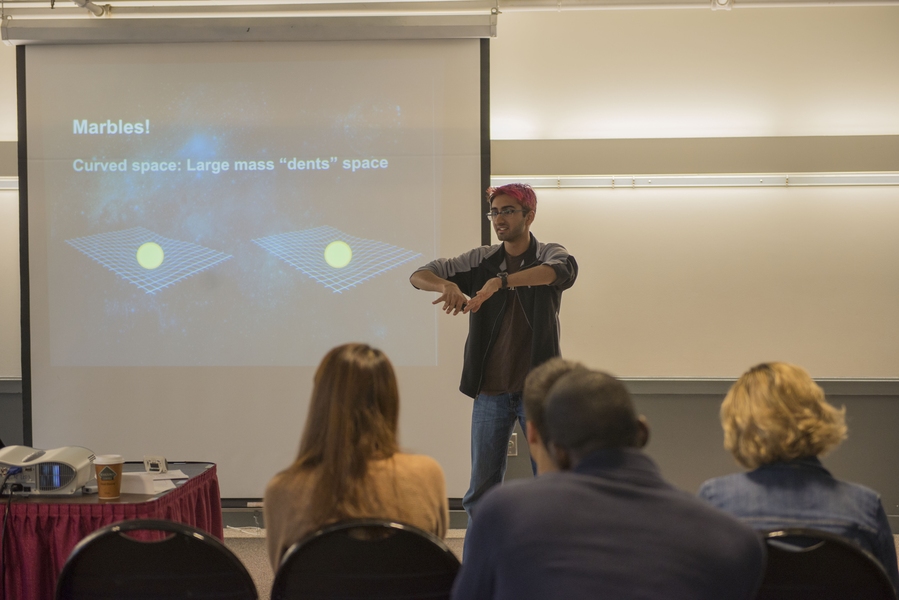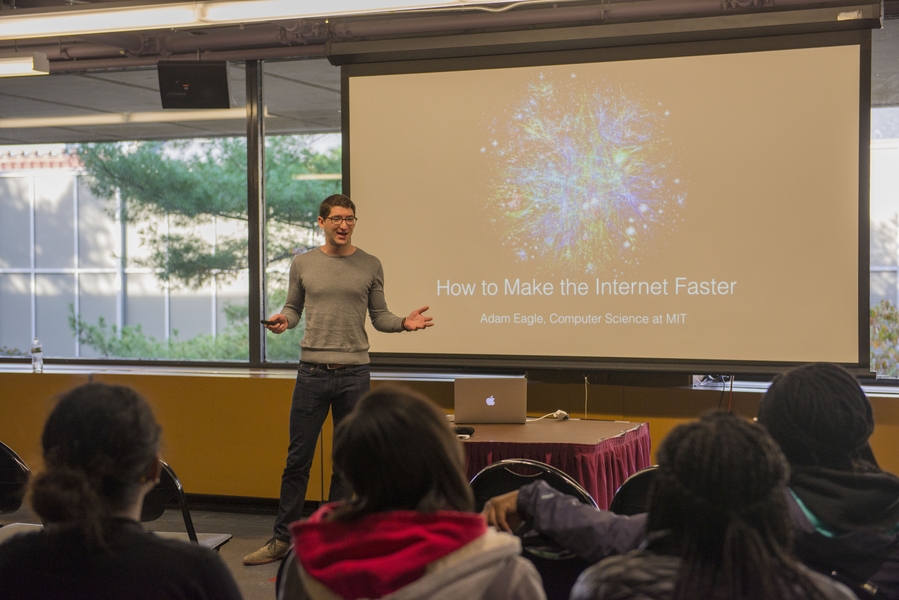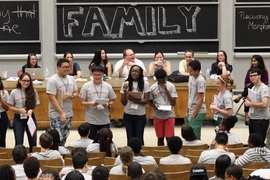If you’re playing improvisational games or Taboo in class, chances are you’re in 6.UAT (Oral Communication). This is not your average engineering class — yet instructors and students agree that 6.UAT is invaluable to success in engineering.
“All of us [alumni] looking back think that 6.UAT might have been the most important class in our curriculum,” says David Thomas ’13, a quantitative researcher for Teza Technologies. “I can’t imagine a more quantitative and technical job than the one I have, but a big part of the job is convincing people a project is worth pursuing and getting partners on board.”
Designed to teach students to speak confidently and give effective technical presentations, 6.UAT is a required subject for all undergraduates in the Department of Electrical Engineering and Computer Science (EECS). “Engineers have great ideas, brilliant ideas, but … part of being good at what you do is being able to explain what it is that you do to audiences with different backgrounds,” says Senior Lecturer Tony Eng, who launched the subject in 2004 and has taught it ever since.
“You can go though MIT and just focus on big algorithms and the best way to write code, but if you didn't learn the communication piece, that would be a shame,” says Sean Liu ’10, MEng ’10, who works as a product manager at Facebook. “So much [of a job] is getting a project approved and communicating results. I’m very thankful that the department folded this class in.”
Practice, practice, practice
A one-semester subject that is usually best taken in spring of the sophomore year or during the junior year, 6.UAT typically requires students to attend one large-group meeting and two small-group recitations a week. The class features many opportunities to practice public speaking and centers on three main assignments:
- a short, structured talk of four to five minutes in which students present a technical project they’ve worked on to a general MIT audience;
- an eight-to-10-minute talk explaining the intuition behind a technical topic to a non-technical audience — namely, a live high school student audience during an outreach event at MIT; and
- a 15-17-minute talk proposing a technical project to an audience of peers.
“The MIT culture puts a great deal of emphasis on coming up with great ideas, and our students (and faculty) do an impressive job of it. Our culture does not, it seems to me, put sufficient value on the ability to communicate those ideas,” says Professor Randall Davis, one of a number of EECS faculty members who have taught recitations for the subject. “One of the important things 6.UAT does is try to change this, teaching our students how to be effective communicators and showing them the value in that skill.”
Eng agrees. “Students think, ‘Why do I have to take a class on talking? I’ve been talking since I was 3,’” he says. “I hope they discover there are all these tools and ideas they can use.”
For example, Eng says he incorporates improvisation to help students gain a level of comfort dealing with the unexpected and uses a form of the game Taboo to train students to avoid jargon. (In Taboo, players must describe a word while avoiding certain banned terms; Eng has created his own cards featuring technical terms and a list of outlawed jargon.) Students in 6.UAT also gain experience designing technical presentations, presenting to different audiences, and giving and receiving constructive feedback.
Engineering a presentation
Liu says he was pleasantly surprised to discover he could improve his speaking skills though 6.UAT, because he had always been fearful of communicating to audiences. “You can think of it almost as an engineering problem,” he says, noting that key talking points can be blocked out and developed piece by piece. “It becomes almost a formula where I can solve each block independently and construct the presentation.”
Students say it’s helpful that Eng provides a great role model for the class — illustrating in every lecture that it is possible to be both a skilled engineer (Eng has five technical degrees from MIT, including a PhD in computer science) and a compelling speaker. “He tells these magical stories and tries to convey the story behind each lesson. It’s pretty cool and inspiring,” Liu says.
“He is like the Jedi master of public speaking,” Thomas says, adding that Eng finds a seemingly endless number of ways to make 6.UAT entertaining. “You don’t know what to expect, but it’ll be fun and different from other engineering courses,” Thomas says.
Along the way, students hopefully change their views about oral communication, Eng explains. “When a student approaches presenting, they think of it as a hurdle to get across to get the grade. In reality, it’s more about the audience and getting a message across,” he says.
That’s a lesson that Liu remembers well. “Even something technical and dry, if presented with the right examples and analogies, can tell the story of what the project was trying to do,” Liu says. “That was a big 'a-ha' moment.”











